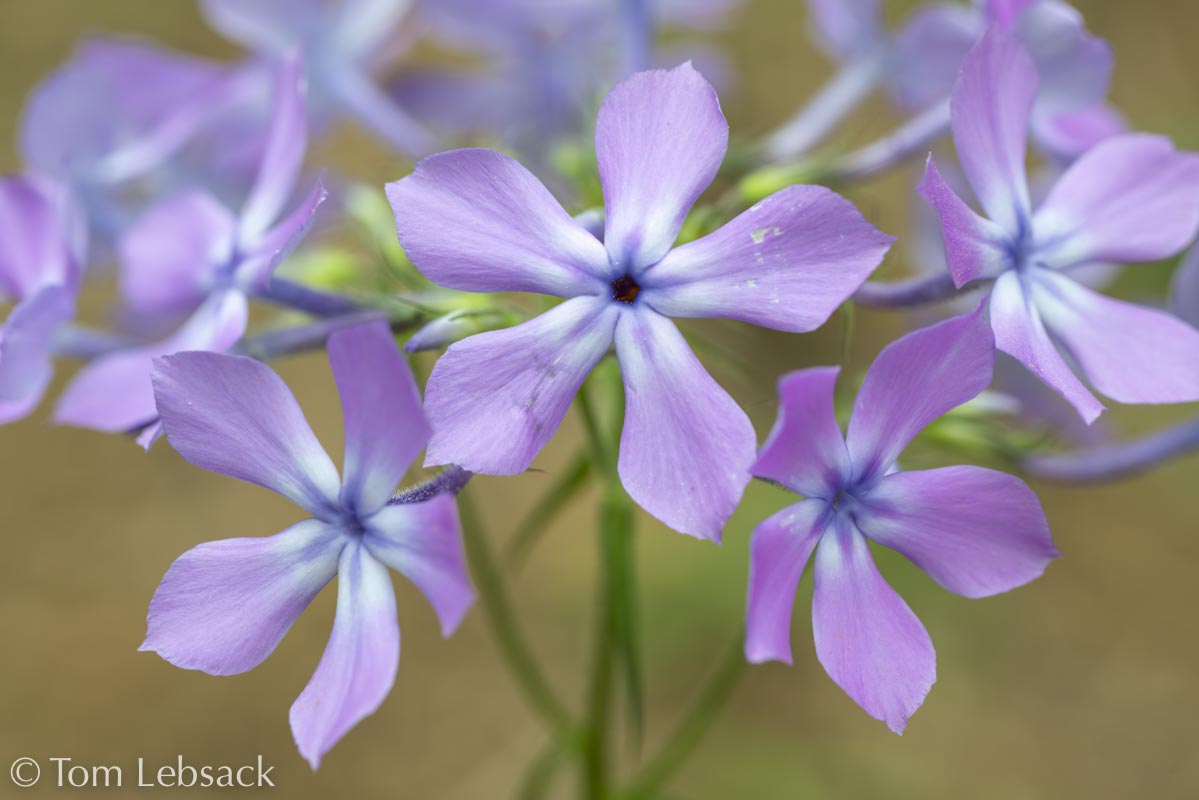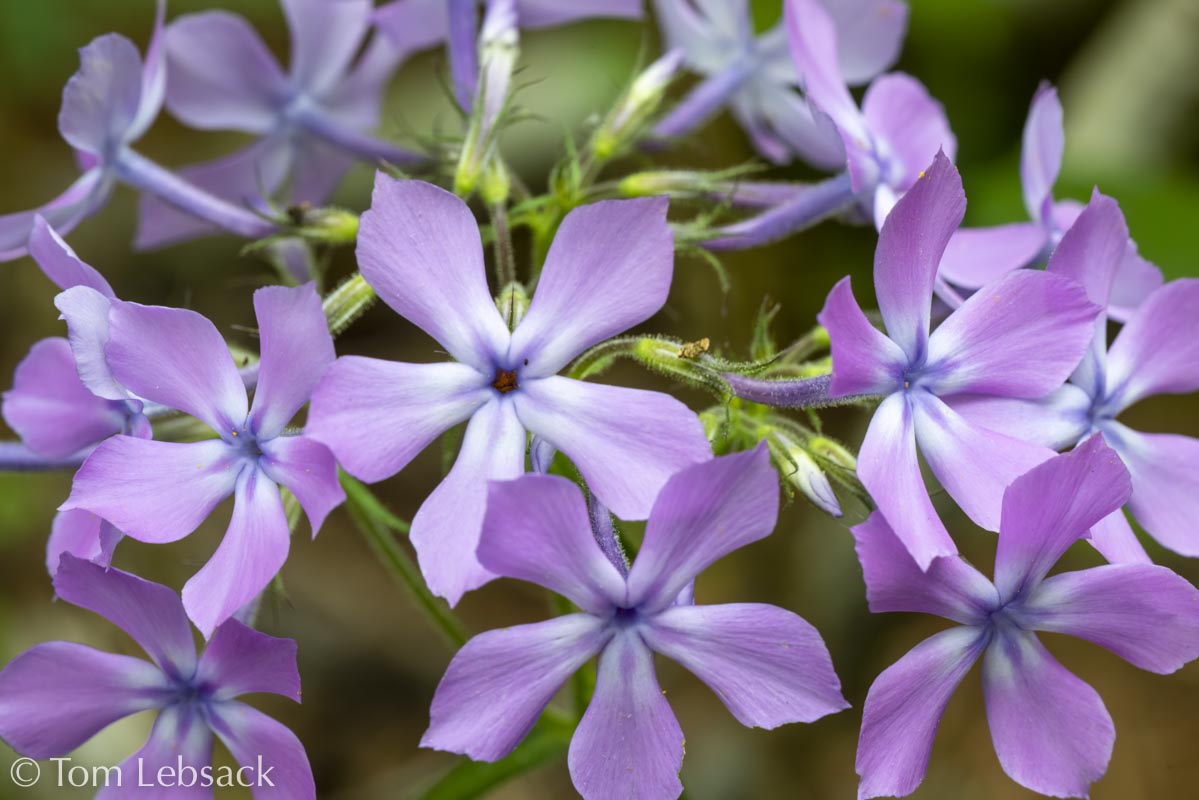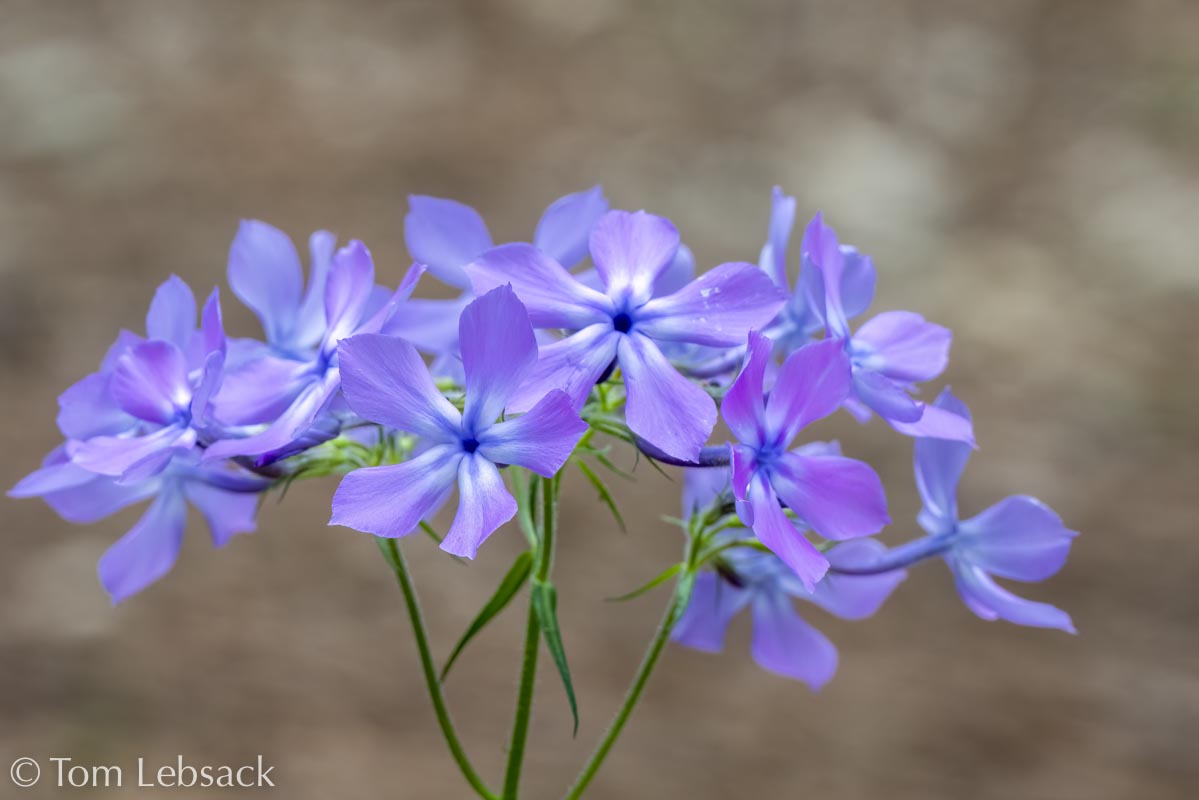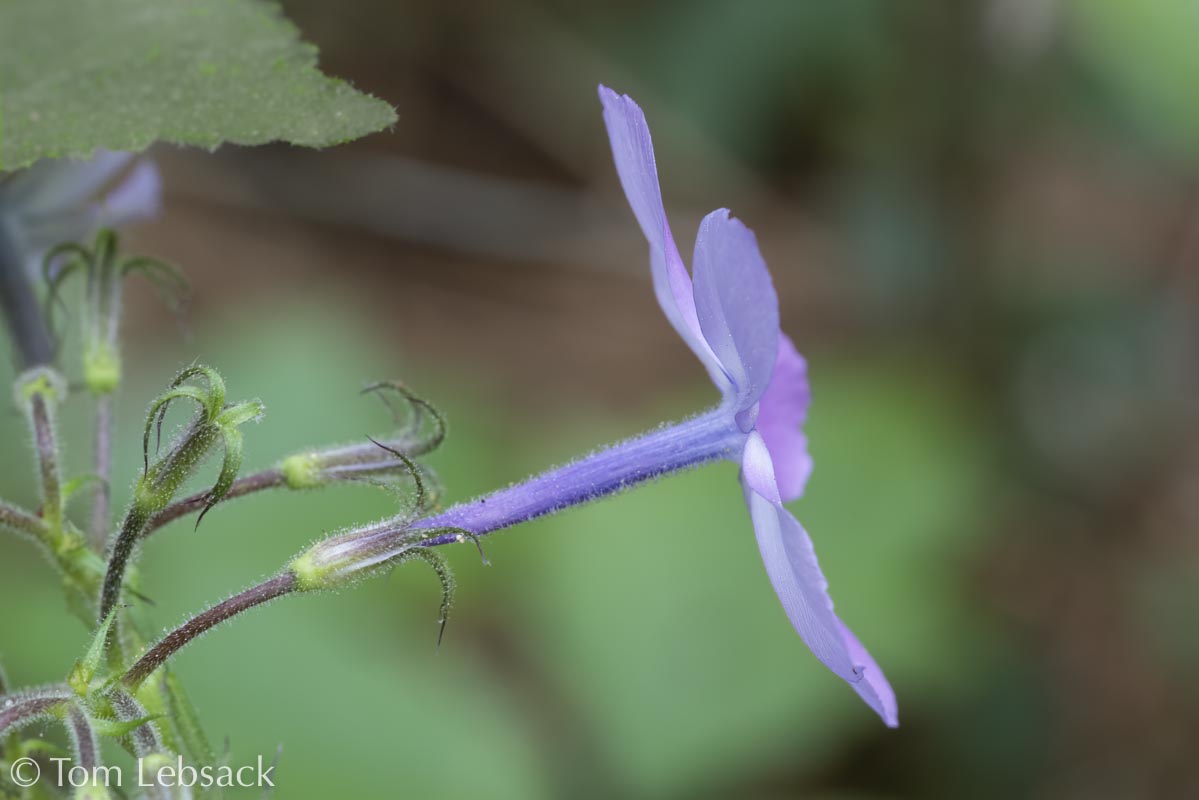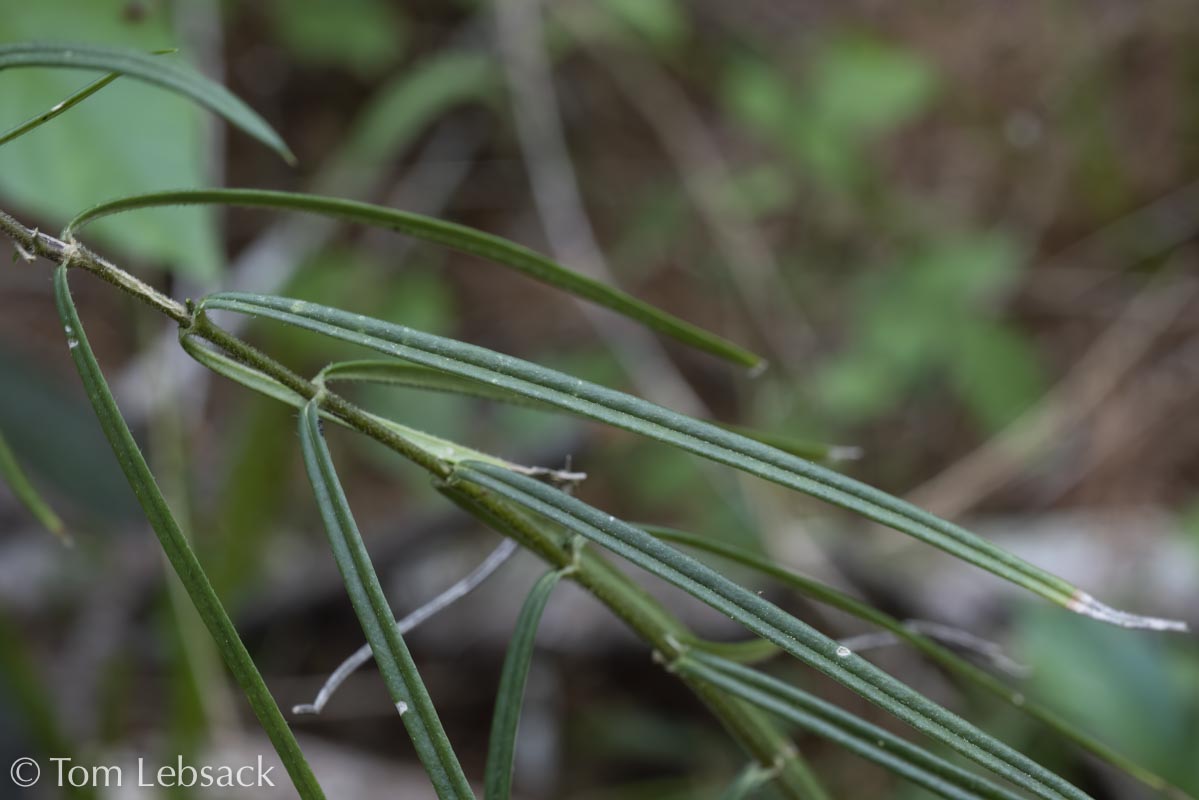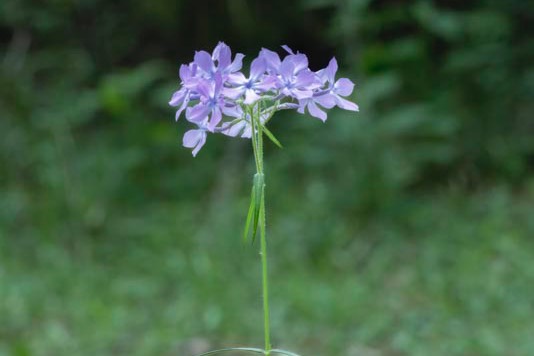Texas Wildbuds
Phlox pilosa
(Prairie Phlox)
| Scientific Name | Phlox pilosa | USDA PLANTS Symbol | PHPI |
| Common Name | Prairie Phlox, Downy Phlox | ITIS Taxonomic Serial No. | 30974 |
| Family | Polemoniaceae (Phlox) | SEINet Reference |
Click Here |
| Description | Habitat: Sandy or clay soils in meadows, open woodlands and fencerows. Plant: Erect, slender perennial up up to 24 inches tall; single flowering stem is unbranched except (sometimes) at the flowering head; stem covered with short, hairs, both glandular and non-glandular. Leaves: Narrow, opposite, linear becoming lanceolate upwards; blades up to 3 inches long and 3/8 wide, sparsely to moderately spread out along the stem; sessile, and mostly hairless. Inflorescence: A rounded cluster of a few to several pink to purple (or, rarely, white) flowers 1/2 to 3/4-inch across, with a long, slender corolla tube; the 5 widely spreading corolla lobes are obovate or oblanceolate; each blossom on a pedicel up to 3/4-inch long; calyx at the base of the tube is purple-tinged and hairy, with 5 long, erect to spreading, very narrow teeth. Bloom Period: March to May. References: "Manual of the Vascular Plants of Texas" by Corell and Johnston, "Wildflowers of Texas" by Geyata Ajilsvsgi, Illinois Wildflowers and Minnesota Wildflowers. |
BONAP Distribution Map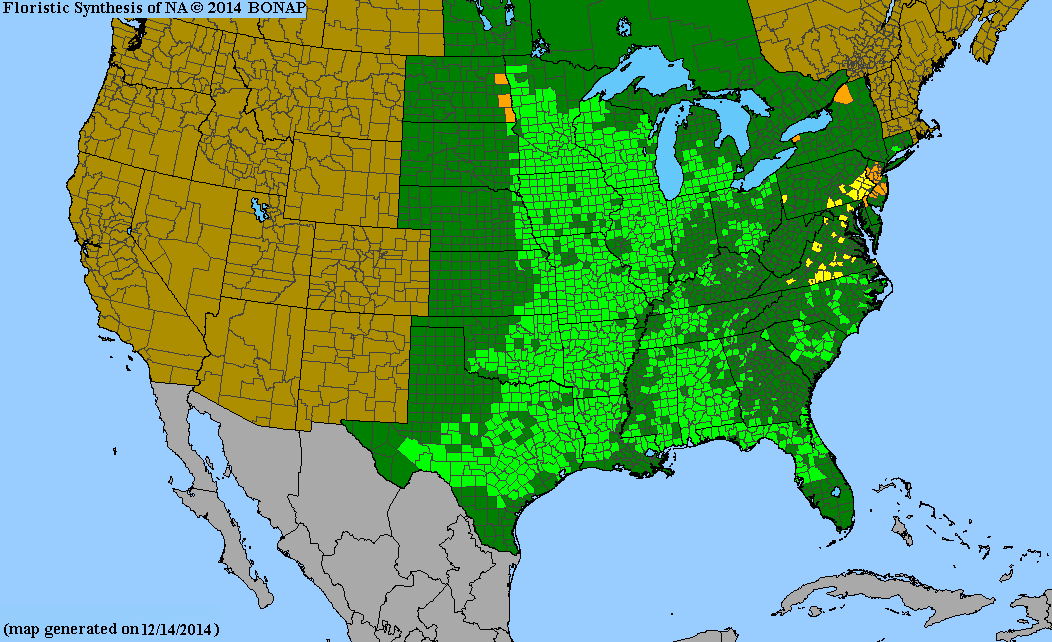 Map Color Key Map Color Key |
Texas Status: Native |
Banner photo of Castilleja indivisa and Lupinus ssp. taken along FM 1323 north of Johnson City, Blanco County
© Tom Lebsack 2025
Every attempt is made to provide accurate, up-to-date, and relevant information, but the completeness or accuracy of any information presented on this website cannot be guaranteed. I use authoritative references to insure high standards of accuracy and review and update the information frequently.
